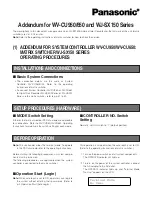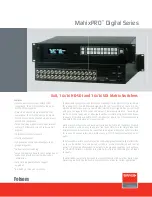
the generated light that shines in multiple directions can overfill the existing cable space and excite a large
number of modes.
Figure 46: LED Transmission Compared to Laser Transmission
Lasers launch light in a more concentrated fashion. A laser transmitter couples light into only a fraction of
the existing modes or optical pathways present in the fiber-optic cable. See
Figure 46: LED Transmission
Compared to Laser Transmission , on page 97
The solution is to condition the laser light launched from the source (transmitter) so that it spreads the light
evenly across the diameter of the fiber-optic cable making the launch look more like an LED source to the
cable. The objective is to scramble the modes of light to distribute the power more equally in all the modes
and prevent the light from being concentrated in just a few modes.
An unconditioned launch, in the worst case, might concentrate all of its light in the center of the fiber-optic
cable, exiting only two or more modes equally.
A significant variation in the amount of DMD is produced from one MMF cable to the next. No reasonable
test can be performed to survey an installed cable plant to assess the effect of DMD. Therefore, you must use
the mode-conditioning patch cords for all uplink modules using MMF when the link span exceeds 984 feet
(300 meters).
For link spans less than 984 feet (300 meters), you can omit the patch cord. We recommend that you do no
use the LX and LH GBIC and MMF without the patch cord for very short link distances of 33 to 328 feet (10
to 100 meters) because it may result in an elevated BER.
Cisco Catalyst 6807-XL Switch Hardware Installation Guide
OL-30656-01
97
Transceivers, Module Connectors, and Cable Specifications
Mode-Conditioning Patch Cord












































